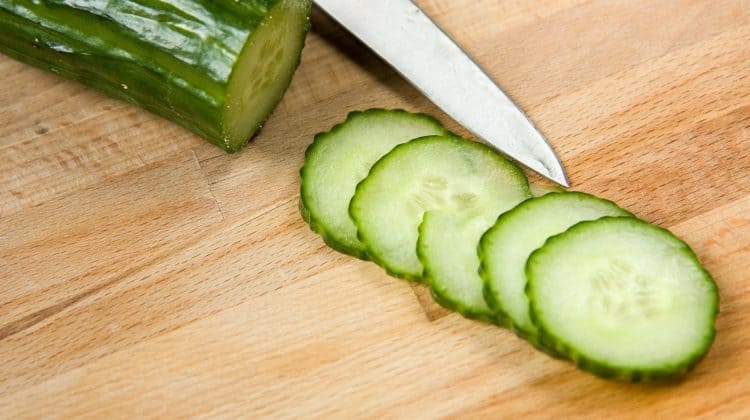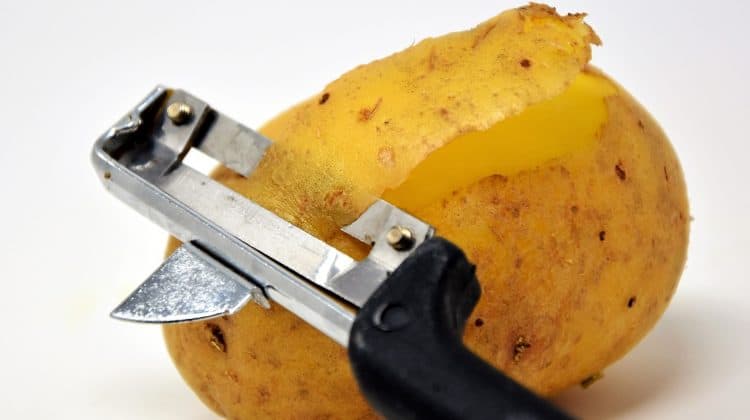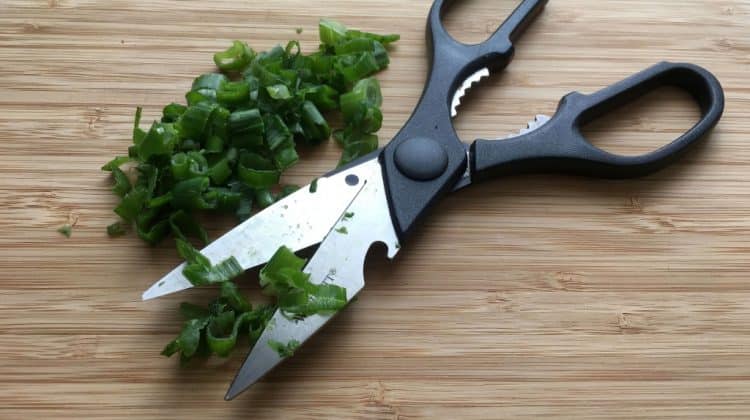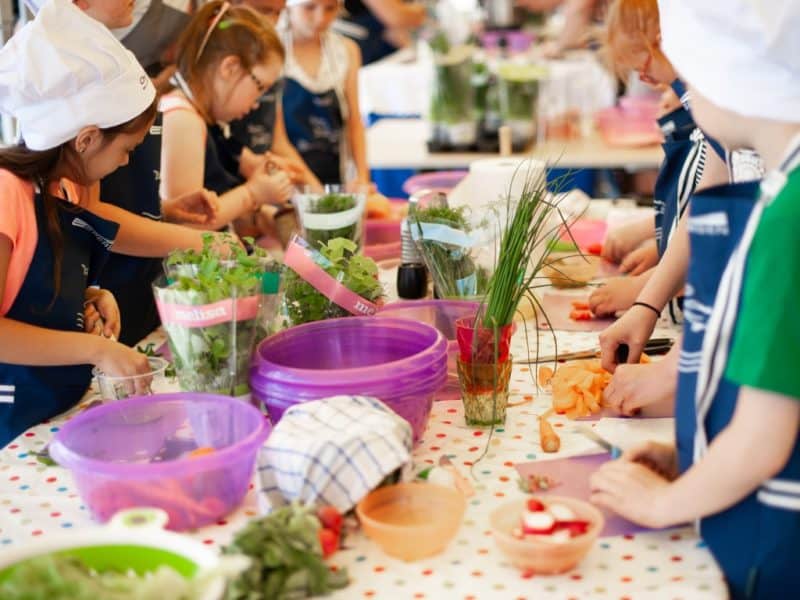Cooking is great fun but it’s vital to stay safe. Using objects like knives and hot pans can be dangerous if you don’t take the right precautions. Here’s our guide to safe techniques in the kitchen. Remember, children will still need supervising at all times, even when you’re following these simple rules.
- Safe chopping
- Safe peeling
- Safe grating
- Staying safe with scissors
- Safe food storage
- Using cookers safely
- Safe taste testing
- Allergic reactions to food
- Safe chopping

First things first: always use a chopping board. Try to create a flat surface when you’re chopping fruit and veg – chop with the flat surface on the board, so the fruit or veg is stable while you cut. We use the ‘bridge’ and ‘claw’ techniques to protect our fingers:
The bridge
- Make a bridge over the vegetable or fruit with your hand. Fingers should be on one side and thumb on the other.
- Pick up the knife with the other hand and check that the blade is facing downwards.
- Guide the knife under the bridge and over the vegetable or fruit. Cut into it by pressing the knife down and pulling it out of the bridge
The claw
- Make a claw with your hand by partly curling your fingers together.
- Pick up the knife with your other hand and check that the blade is facing downwards.
- Tilt the knife and slice through the vegetable or fruit, using your fingers as a guide.
- Slide your fingers back, keeping your grip on what you are chopping, and continue slicing carefully. Keep the ends of your fingers vertical almost as if you are digging in your fingernails.
- Keep your thumb well back and away from the knife.
- Keep reminding yourself to keep the ends of your fingers vertical – it’s easy to forget and let your fingers slide into a horizontal position after a few slices!

Safe peeling.
- Always peel away from you, with the end of the vegetable or fruit on your chopping board.
- With long foods like carrots, hold one end and peel from the middle away from you. Then hold the peeled end and repeat the same process, peeling from the middle towards the chopping board.
Safe grating
You don’t have to grate every bit of the food. Leave a small chunk at the end to hang on to, so your fingers aren’t pressed against the grater.

Staying safe with scissors
Kitchen scissors are sometimes a useful alternative to a knife, especially with young children. They’re great for snipping herbs and spring onions – and even pepper slices.
Safe food storage
- Cooked and raw ingredients need to be kept covered, and you need to make sure they stay separate while they’re being stored and prepared.
- Store raw meats below cooked meats in the fridge.
- Frozen foods should be stored in a freezer at -18°C or below. Food in the fridge should be kept at 0 to 5°C.
- All of our recipes include advice on reheating dishes, and times and temperatures for cooking or chilling.

Cookers
- Always closely supervise children when they’re using the cooker.
- When the oven’s hot, adjust oven shelves before you put anything on them.
- Always use oven gloves to carry hot pans and tins.
- Pan handles should be kept turned inwards, (not hanging over the hob sides).
Taste testing
- Always supervise children when they’re tasting what they’ve made.
- Food for tasting should be warm, not hot.
- Allergic reactions to food.
Also, take care when preparing food if you’re using ingredients which are often found to cause allergic reactions, like nuts.

